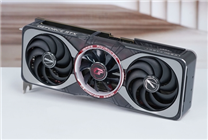Dynamic Growth in Domestic Graphics Card Market: Trends and Insights
Summary:
- September 2025 saw a remarkable 30% month-on-month increase in domestic graphics card shipments, reflecting notable market activity.
- Strong online stocking and robust offline demand, particularly from Internet cafés, have bolstered manufacturer shipments.
- The upcoming Double Eleven event is expected to further stimulate market dynamics, albeit with potential supply constraints from NVIDIA in the fourth quarter.
In September 2025, statistics indicate a significant upswing in the domestic graphics card market. Shipments experienced a remarkable surge of approximately 30% month-on-month, alongside a year-on-year growth rate of about 16%. This robust performance highlights a revitalized interest in graphics technology among consumers and businesses alike.
Active Market Dynamics
The current market landscape reveals a blend of strong online replenishment and healthy offline demand. Internet cafés, in particular, are ramping up orders, resulting in increased shipments from various manufacturers. This trend suggests a shift in consumer behavior, with a growing appreciation for high-performance graphics capabilities.
As we approach the Double Eleven shopping festival, anticipated to commence this month, expectations hint at continued market vitality through October and November. The festivities are likely to amplify consumer spending and further drive sales in the coming weeks.
Potential Challenges Ahead
However, as we venture into the fourth quarter, emerging reports suggest NVIDIA may implement a supply control strategy, which could lead to tighter inventory levels. The intricacies of this supply management will hinge on real-time demand fluctuations observed during the Double Eleven event and in the broader offline market context. The balance between supply and demand will be essential in determining pricing and availability in the coming months.
Insights on Product Availability
A closer examination of specific graphics card models reveals that the RTX 5060 is currently experiencing a slight shortage. In contrast, the supply of other RTX 50 series models remains ample, with prices remaining relatively stable. This stability may provide consumers with a reliable purchasing environment despite potential fluctuations in demand.
Leading Brands in the Market
With regard to brand performance, Colorful has established itself as a dominant player, holding a significant lead in the market. This prominence underscores the ongoing strength of local manufacturers in meeting consumer needs. Following closely behind are major Taiwanese brands including Asus, Gigabyte, and MSI, which together represent a formidable force in the industry. GALAX also emerges as a key player within this leading group, contributing to the competitive landscape.
Conversely, several other brands, such as Renaissance, Inzo, Zotac, Maxxuan, and Gengsheng, are positioned in a lower tier of the market. It’s noteworthy that Renaissance, Inzo, and Biostar are interconnected under the PConn Group, suggesting strategic consolidation among certain brands.
Conclusion
In summary, the domestic graphics card market is witnessing dynamic growth characterized by strong shipments and robust consumer demand. As the Double Eleven event approaches, it remains to be seen how demand will shape inventory levels, especially with potential supply constraints from major manufacturers like NVIDIA. For consumers and businesses, this period may offer opportunities to capitalize on favorable market conditions while navigating potential supply challenges.
This ongoing evolution in the graphics card market illustrates the critical interplay between demand, supply, and brand competitiveness, setting the stage for an intriguing next quarter ahead. As stakeholders observe these developments, remaining agile in response to market trends will be key to leveraging opportunities in this vibrant sector.





